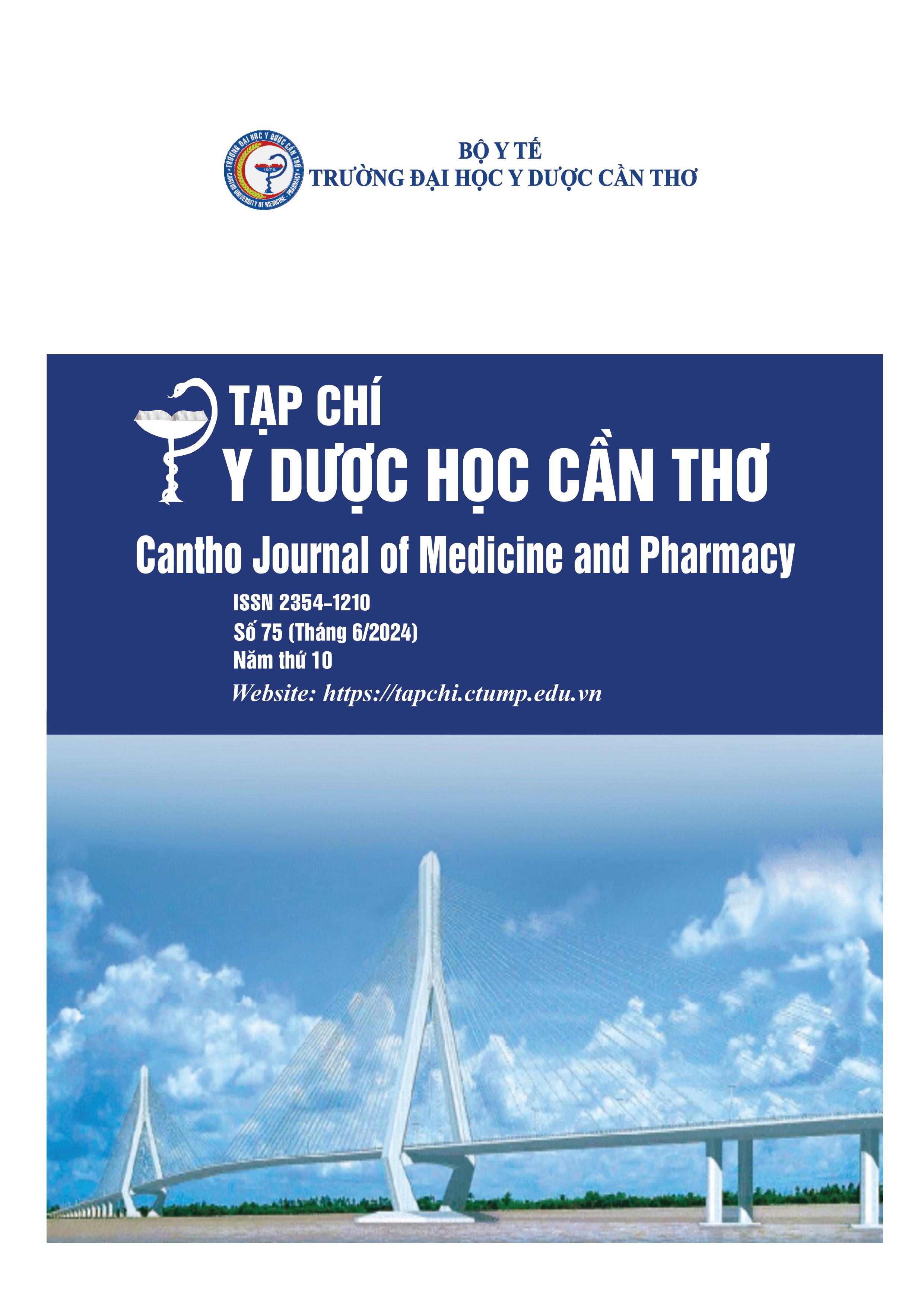SITUATION OF SURGICAL SITE INFECTIONS AND RELATED FACTORS IN THE DEPARTMENTS OF SURGERY, HUE UNIVERSITY OF MEDICINE AND PHARMACY HOSPITAL IN 2023
Main Article Content
Abstract
Background: This study aimed to investigate the situation of surgical site infections and associated factors in surgical departments of Hue University of Medicine and Pharmacy Hospital in 2023. Objectives: To assess the prevalence of surgical site infections and factors associated with the risk of such infections. Materials and methods: A cross-sectional descriptive study was conducted by reviewing medical records of 475 patients aged 18 and above who underwent surgery and were under postoperative care within 48 hours after surgery in surgical departments of Hue University of Medicine and Pharmacy Hospital from January 2023 to December 2023. Results: The overall rate of surgical site infections was 1.5%. The highest rate of surgical site infections was observed in the Department of Gastrointestinal Surgery (71.4%), followed by Orthopedics and Thoracic Trauma Department (28.6%), while the Department of Urology and Neurosurgery had no cases of surgical site infections. The majority of surgeries at Hue University Hospital in 2023 were clean or clean-contaminated. The rate of surgical site infections was low for clean surgeries (1.5%) and clean-contaminated surgeries (1%). The rate of surgical site infections increased for contaminated surgeries (7.7%). The patient's preoperative infection increases the risk of surgical wound infection. Conclusion: The overall rate of surgical site infections was 1.5%. The identified factor associated with surgical site infections was the preoperative infection of patients.
Article Details
Keywords
Surgical site infection, Department of Surgery, preoperative infection
References
2. Bộ Y tế. Hướng dẫn phòng ngừa nhiễm khuẩn vết mổ, Ban hành kèm theo Quyết định số: 3 71/QĐ-BYT ngày 27 tháng năm 2012 của Bộ Y tế, Bộ Y tế, Hà Nội. 2012.
3. Trần Đình Bình, Trần Đình Tân. Tình hình nhiễm khuẩn bệnh viện ở các khoa có phẫu thuật tại Bệnh viện Trường Đại học Y Dược Huế năm 2015. Tạp chí Y Dược học. 2016. No.5(6), 39-43. DOI: 10.34071/jmp.2016.5.6.
4. Bộ Y tế. Hướng dẫn giám sát nhiễm khuẩn vết mổ, Ban hành kèm theo Quyết định số: 152/QĐBYT ngày 24 tháng 3 năm 2023 của Bộ Y tế, Bộ Y tế, Hà Nội. 2023.
5. Ahmed Morad Asaad và Samir Ahmad Badr. Surgical Site Infections in Developing Countries: Current Burden and Future Challenges. Clinical Microbiology: Open Access. 2016. Vol 05, Issue 06. DOI: 10.4172/2327-5073.1000e136. 6. Anderson D. J., Surgical site infections. Infect Dis Clin North Am. 2011. 25(1), 135-153. DOI: 10.1016/j.idc.2010.11.004.
7. Đặng Như Phồn, Thân Thị Diệu, Trương Thị Thu Nhung, Nguyễn Thị Mai Hòa, Đặng Nhật Tân. Một số đặc điểm nhiễm khuẩn vết mổ tại trung tâm chấn thương chỉnh hình, Bệnh viện Trung ương Huế. Tạp Chí Y học Lâm Sàng. 2020. Số 60, 6166. DOI: 10.38103/jcmhch.2020.60.9.
8. Nông Văn Hoành. Khảo sát tình hình sử dụng kháng sinh khoa ngoại tổng hợp bệnh viện Đa Khoa Nà Trì - tỉnh Hà Giang, Luận văn Dược sĩ chuyên khoa cấp I, Trường Đại học Dược Hà Nội. 2017.
9. Nguyễn Văn Hoàn. Thực trạng nhiễm khuẩn vết mổ và quản lý các yếu tố nguy cơ trong phẫu thuật tại Bệnh viện Quân Y 110 năm 2019, Luận văn thạc sĩ quản lý bệnh viện, Trường Đại học Thăng Long. 2020.
10. Phạm Thị Lan, Trịnh Thị Thoa, Nguyễn Vũ Hoàng Yến và cộng sự. Nhiễm khuẩn vết mổ và các yếu tố liên quan tại Bệnh viện Đại học Y Dược TPHCM. Tạp Chí Y học Việt Nam. 2023. 524(2), 349-354. https://doi.org/10.51298/vmj.v524i2.4892


